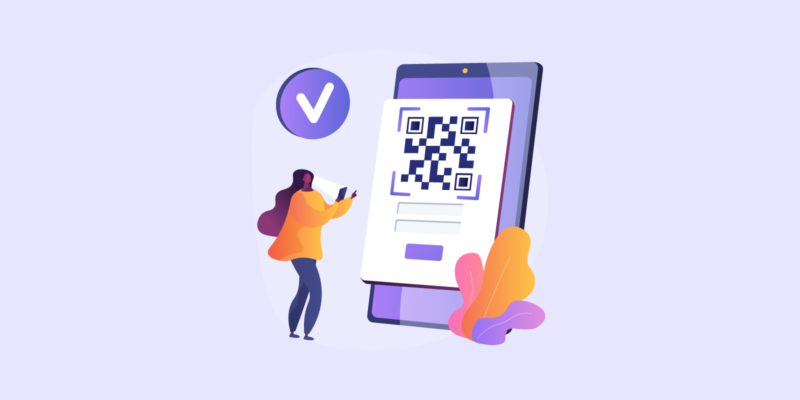Got loads of traffic … but not many leads? It sucks. But now’s the time to flip that.
It’s 2020, and with 61% of B2B marketers considering lead generation to be their biggest challenge, knowing how to generate high quality leads can put you ahead of your competition.
The more leads you have, the more potential sales you will make. Therefore, we all want more leads.
The problem is that B2B lead generation isn’t exactly easy. Where do they come from and how do you generate them? What methods should you be using, and how should you use them?
In the world of B2B marketing, generating leads is all about understanding your target audience. This means that you’re able to anticipate their needs and wants more than the competition, and that you have the right solutions to their problems.
Moreover, it also helps if you can present the solutions in the best possible way.
Whilst this can sound like a lot of work, the good news is that we’re here to make things easier. In this article, we will deconstruct 6 of the most effective B2B lead generation strategies to help you win BIG in 2020.
Ready? Let’s dive in!
In this article
1. Create Cold Emails Campaigns
Some might say cold emailing is dead – but they’d be wrong, with stats showing that open rates can be as high as 28%. As some marketers put it: Emails will outlive us all!
Cold emailing can become your secret weapon if you know how to do it right. Let’s break this process down:
Define your target audience
When you understand your target audience, you can then craft optimised cold emails that grab peoples’ attention.
So how to find your target audience and create your ideal buyer persona?
Provided you’ve got traffic, you could take a look at your analytics and website ranking. All you have to do is either take a look at your Google Analytics or any other tool you use to uncover the behaviour of your website’s visitors.
Heat maps are especially useful here as they show you what sections of your website appeal to people the most.
Here are some bits of information you might want to look for when defining your B2B buyer persona:
- Location
- Budget
- Other products/services they use
- Who’s the decision-making person
- Pain points
It’s also useful to take a look at your product or services and ask yourself some questions about its products and features.
- What value do they offer to people?
- What problems does it solve?
- What are the benefits?
- Who would buy this?
Once we know this kind of information, we can start creating more detailed buyer personas – and better cold emails to level up your B2B lead generation game.
And if you do happen to have a number of existing customers at the moment, you could send them a short survey that extracts information that will help you create your buyer persona. You can use such services as SurveyMonkey or Survey Anyplace to make your survey or a questionnaire and distribute it to your existing user base.
Or you can take this process one step further and instead of a boring survey, use a more interactive content such as polls or survey contest that you can design using Woorise templates.
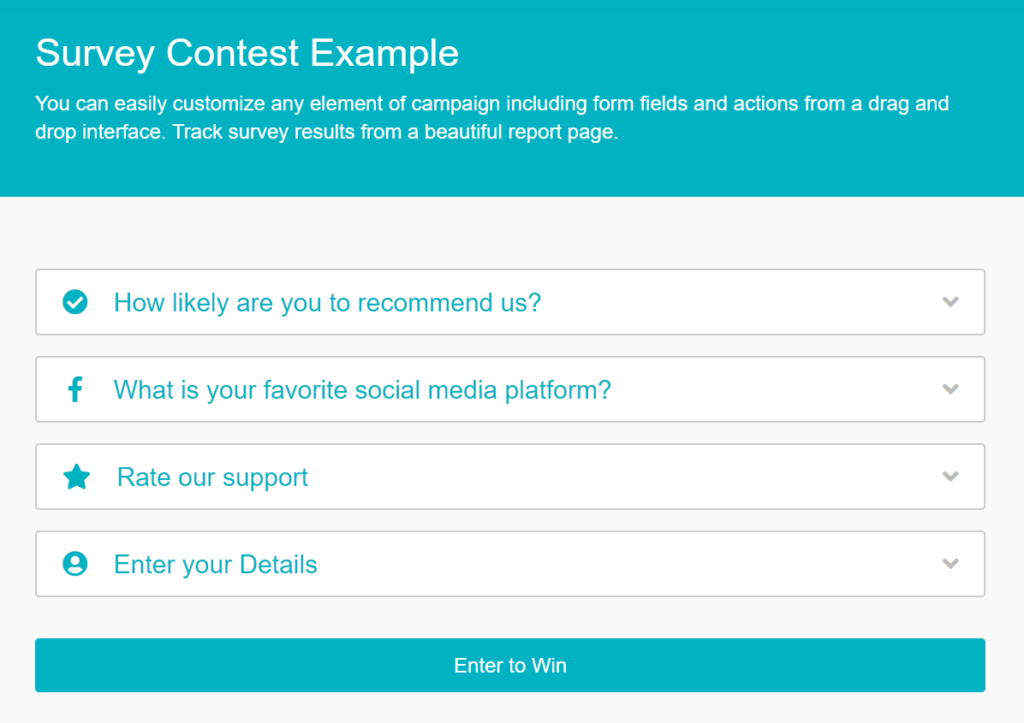
Once you gathered all necessary data you can design your persona from scratch or use some of the ready-to-go user persona templates to speed up your work.
Here’s an example of how such a persona can look like for B2B companies:
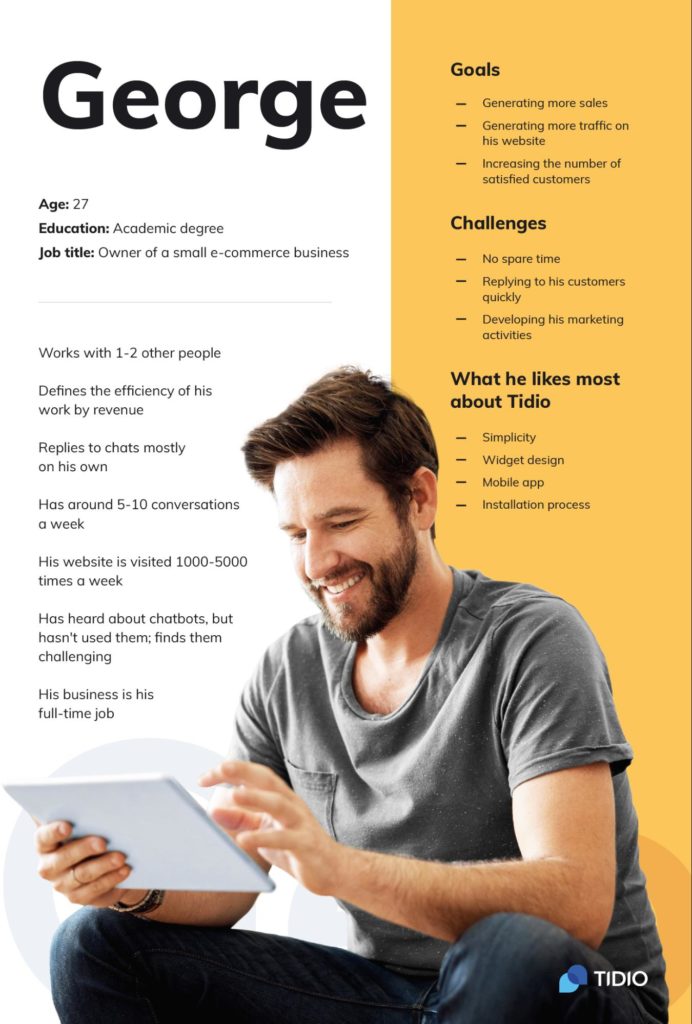
Another idea is to take a look at your rivals.
To do this, you can conduct competitor analysis and spy on them on social media to see what market segments they’re targeting. If they’re hunting down different segments to you, ask yourself if you should be hunting them down too. And if so, what do their customers look like?
And if you do happen to have a number of existing customers at the moment, you could send them a short survey that extracts information that will help you create your buyer persona.
Bonus Tip: Instead of using a complicated analytics tool to track the behaviour of your website’s visitors, you can also install chatbots that will do the job for you automatically.
Find contact information
There are plenty of ways to get in touch with your potential prospects. For example, you can use email finder tools if you know the URL of their website. You can also reach out to them on LinkedIn.
Here’s a cool and totally legit LinkedIn email scraping trick that not many people know about: Once you connect with someone who has lead potential, you can easily get their email address by going to their “Contact info” and voila! There you have it.
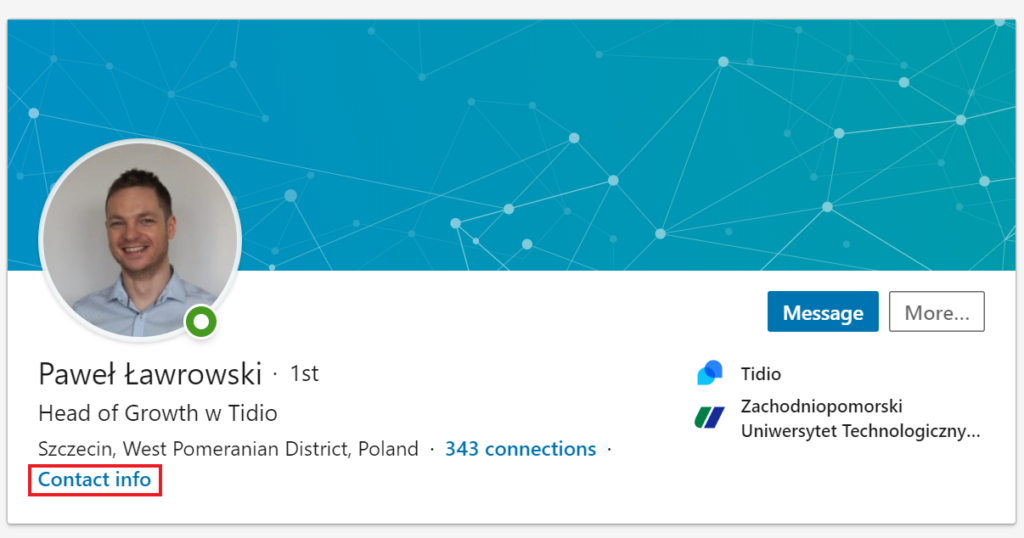
Find the right email marketing platform
Marketing platforms like Moosend are there to help you segment your contacts, schedule emails and send better emails via templates.
When looking for the email marketing platform that’s right for you, you ideally want an all-in-one solution that’s bursting with the features you need, but which isn’t going to break the bank. Features to look out for include templates, autoresponders, A/B testing, mailing list management and analytics and reports.
Launch an email outreach campaign
Once you’ve got your list of contacts, it’s time to launch an email outreach campaign. Depending on the product or service that you are offering, you should experiment with your pitches.
We won’t go too much into details on how to conduct such a campaign, but you can check out this comprehensive email outreach guide to learn more.
However, just to give you a glimpse of what a good outreach email looks like, here are two real-life examples.
The first example comes from an employee feedback tool called TeamBuzz, which reached out to us with this email:
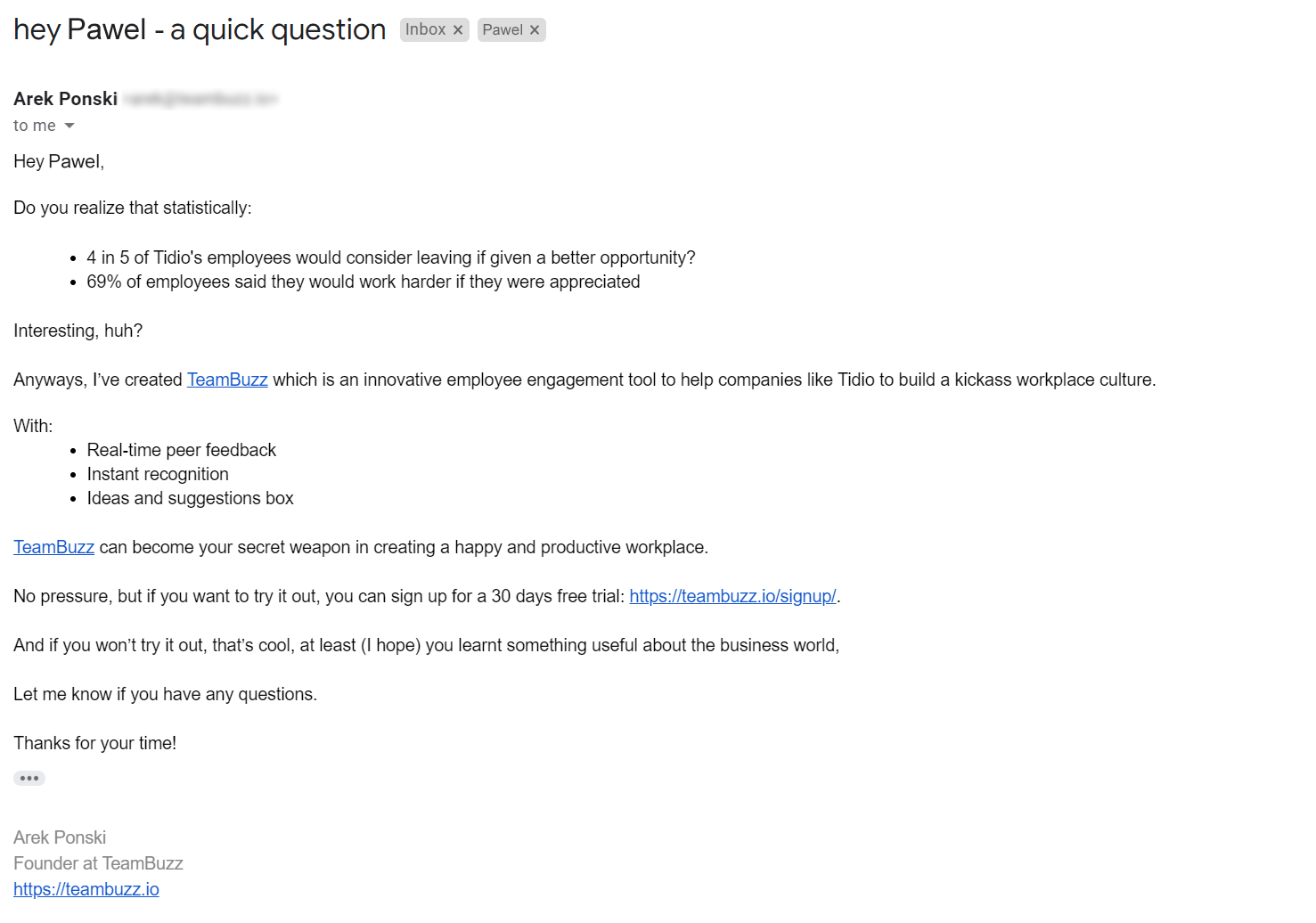
It’s straight to the point, drops some insightful information, and it also offers something for free. Pretty cool, huh?
However, keep in mind that this kind of direct outreach will work only if you are reaching out to the people that are interested in what you have to offer.
Here’s another example of a very nicely done email outreach:
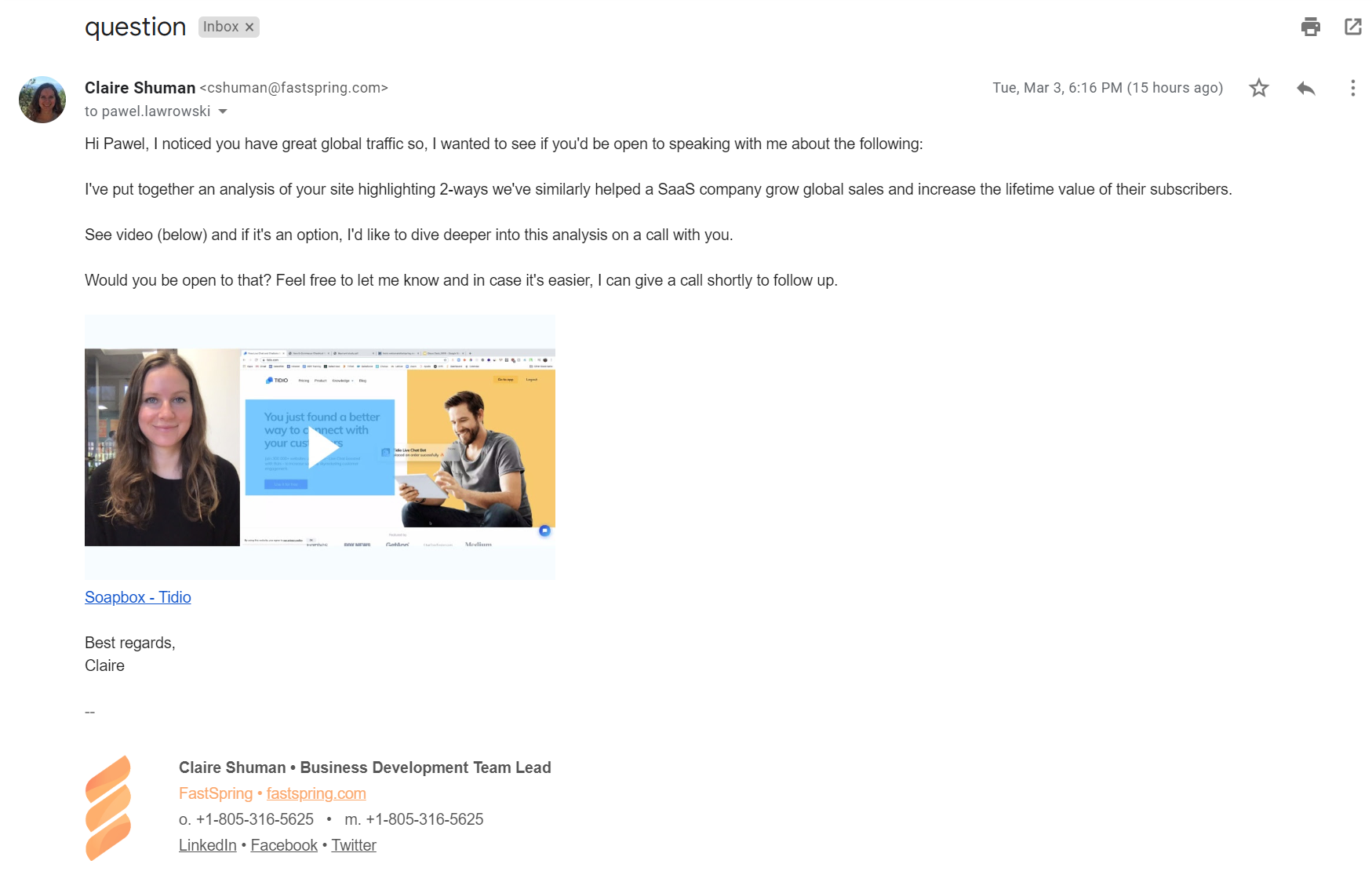
It’s short and highly relevant to Tidio, as the video presents ways in which Soapbox can help the software improve some of the things on the website. It’s great because it gives straight-up value and builds trust. These are the kind of things you should be aiming for with your outreach.
You can run your email campaigns manually verifying email along the way using a tool like Voila Norbert, or use tools such as Pitchbox or Respona to automate the process.
2. Experiment With Contests and Quizzes
Another great way to gently encourage your website visitors to leave you their contact data is by running giveaways or quizzes. Here again, you can use tools like Woorise to design beautiful contests or quizzes to collect email addresses.
Here’s how a basic form looks like for unlocking a discount coupon that you can use:
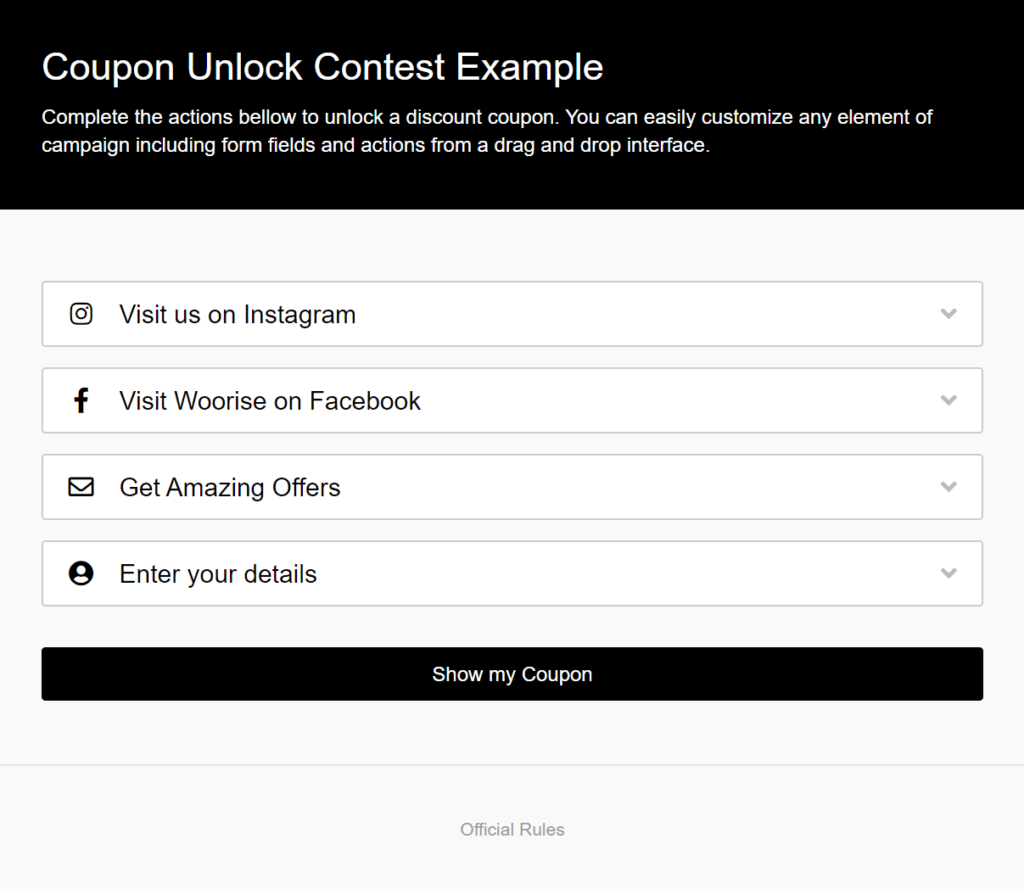
Not sure what to give away in your contests?
It all comes down again to having a specific profile of your buyer persona. For B2B businesses it’s usually about free trials, discounts or tickets for industry events.
In fact, using contests for lead generation is especially popular with all sorts of conferences. Customers just need to enter their email to get a chance to win for themselves or their team.
For example, the popular SEO conference in Brighton called BrightonSEO, uses the exact same approach by offering a free entry ticket ballot:
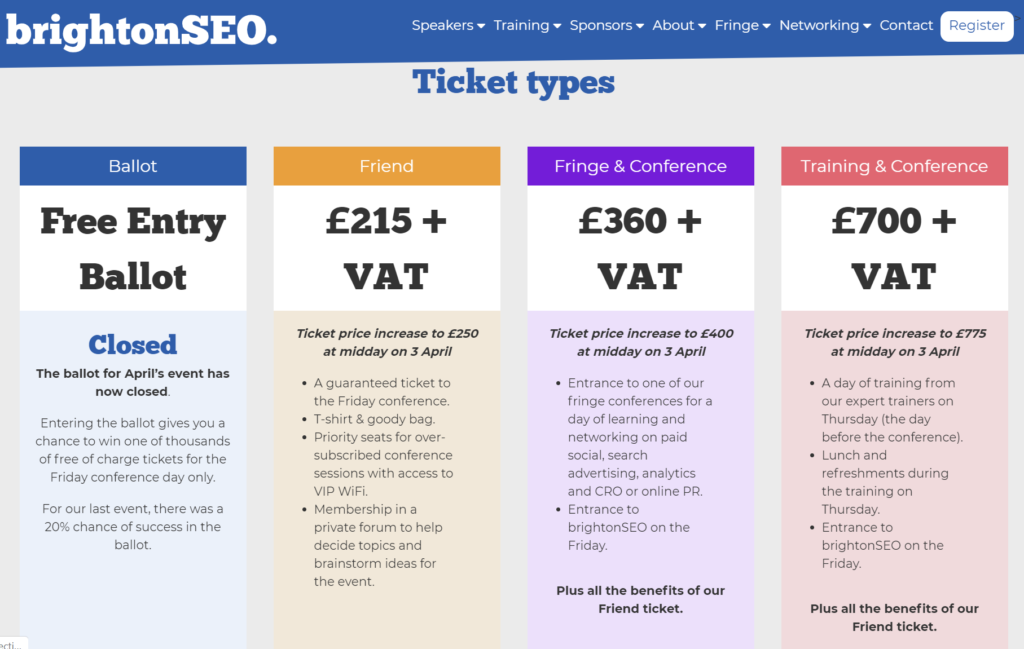
Apart from this, quizzes are also great for converting your website visitors into leads. They’re interactive and, as long as you ask questions that will appeal to your target audience, they can even be a bit fun. Not only that, but quizzes are awesome at qualifying them so that you get a better idea of who you are marketing to.
You can create such a quiz with Woorise, place on your website to collect emails and monitor the results from the panel:
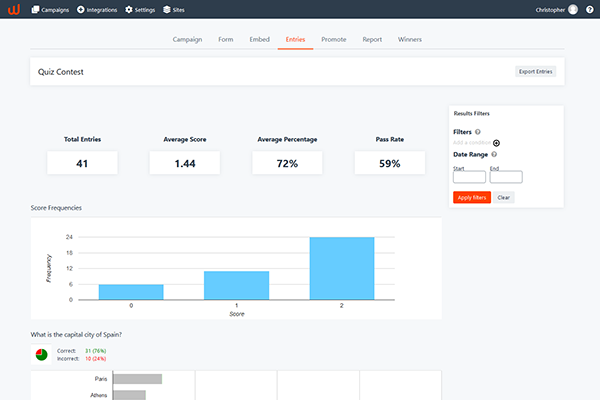
3. Offer attractive lead magnets
We live in an era where trading an email address has become a bit of an art, primarily because people won’t just leave you their emails because you asked. They expect something back, and it has to be something that’s useful to them.
Moreover, in the B2B sector it has to be something that will actually improve some aspect of their business.
That said, nothing gets people as excited to hand over their email address to you than a free gift.
Not convinced?
Take a look at what Dan Ariely discovered in his book “Predictably Irrational” when conducting an experiment related to Amazon Gift cards. Dan asked whether the respondents preferred to receive:
- A $10 Amazon gift card for free, or
- A $20 Amazon gift card for $7
Even though the second option had a higher value ($13 vs $10), the results speak for themselves:
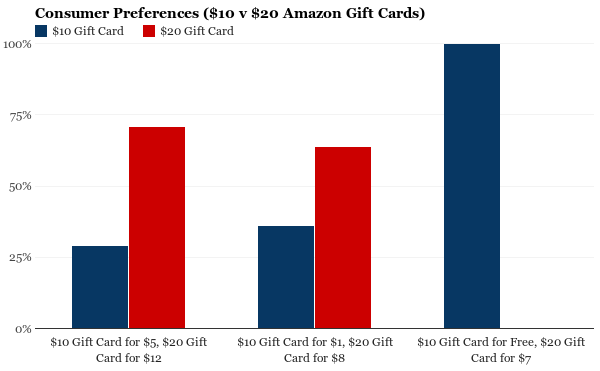
Everyone chose the free $10 Amazon card. The author refers to it as a “zero-price-effect” as humans do not see the negative side of something being free. If it’s free, we’ll take it!
And this is where the idea of lead magnets comes in. They can have the exact same effect when done properly.
A lead magnet can take many forms, but the most popular are:
- eBooks, whitepapers, checklists
- Email course
- Online course
- Invitation to the community
- Newsletter
- Templates
- Free trials
To create an attractive lead magnet, you need to have a deep understanding of your audience’s needs and wants. Once you’ve defined your buyer persona, it makes it much easier to offer something that is relevant and interesting to your audience.
Once you have your lead magnet ready, it’s time to think of ways to inform your website visitors about it. Here are some of the most common lead generation tool and methods:
Pop-ups
Pop-ups are an effective lead generation tool because they allow you to put your call-to-action in front of your audience at the exact right time. For example, exit-intent pop-ups can trigger when a user’s mouse gets within 10-20% of the top of the screen, showing their intent to leave your site.
Additionally, you can set your pop-ups to trigger after any amount of time has passed, like 30, 60, or 90 seconds. Make sure to look at your analytics to view your reader’s behavior and trigger a lead magnet at the right time.
Here’s an example of an exit-intent pop-up with a lead magnet from AdamEnfroy.com from his guide on how to start a successful blog. This triggers when a user gets within 20% of the top of the screen, or after 90 seconds, whichever comes first.
He generated over 11,000 email subscribers for his brand new B2B blog with this tactic in 2019.
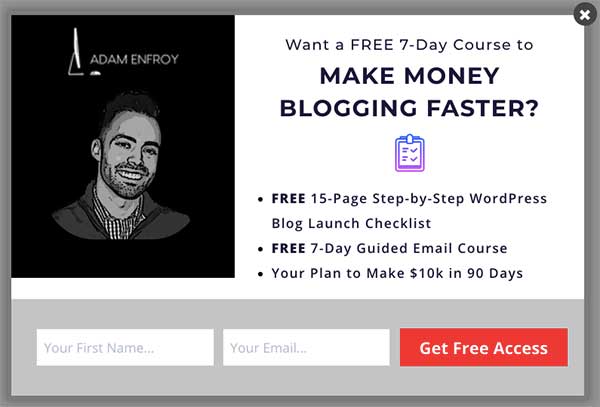
Chatbots
Chatbots are great in delivering your lead magnets to anyone who visits your website. They are less “invasive” than a pop-up and can be used to personalize the offer you are delivering based on the segments you created for your website’s visitors. Yep, that’s right.
With chatbots you can track, tag and segment your audience from the moment they enter your website. No complicated and expensive analytics tools are required. Chatbots created with Tidio can do it all for you, including the collection of emails for your lead generation purposes.
Here’s a real life example of how chatbots can collect emails by offering a discount.
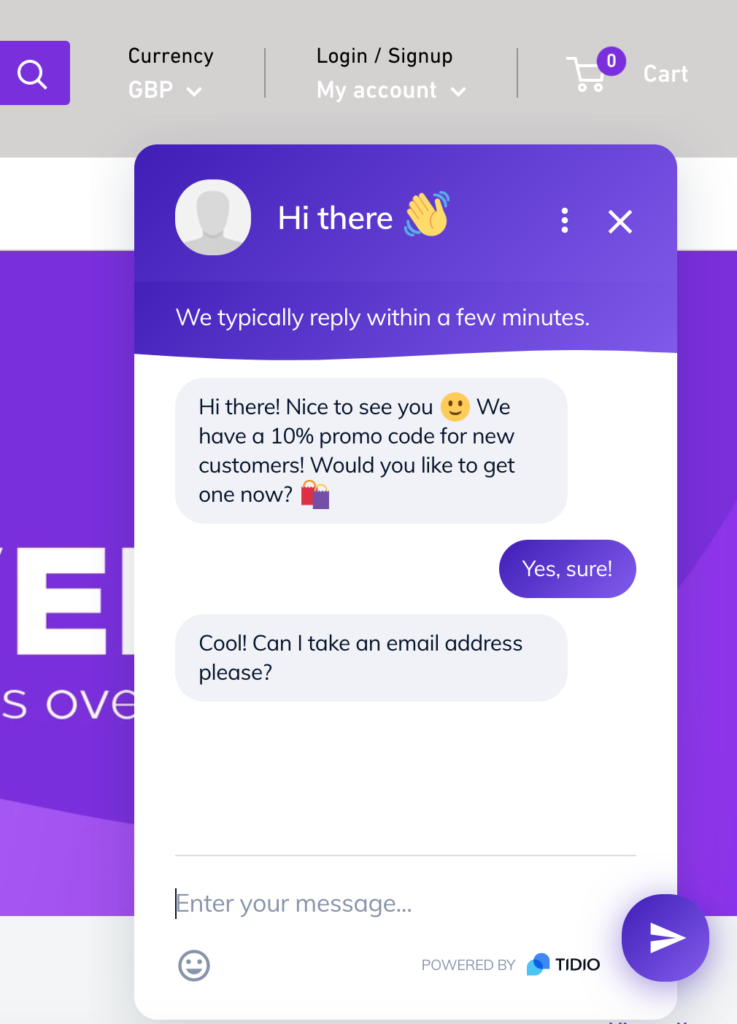
As mentioned above, by segmenting your website’s visitors, you can deliver personalized lead magnets. For example, on Tidio’s blog we use chatbots to tag and segment our audience and then deliver them an ebook that suits their needs best.
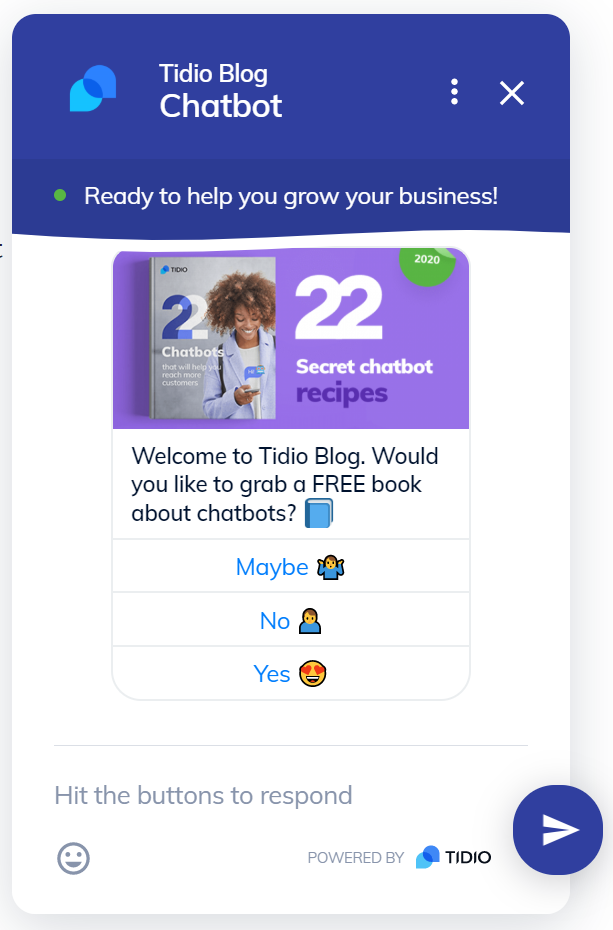
Gated content
Gated content includes case studies, videos, white papers, training, content upgrades (such as creating an eBook that expands on a blog post the prospect is currently reading) and webinars. In other words, valuable and educational content that is otherwise closed off to them unless they fill out a form and hand over their email details.
B2B businesses find the likes of case studies, videos and white papers very useful if you’ve crammed them with data, stats and valuable tips and tricks that will help them to improve the way they do things.
In fact, they find these things so useful that they’ll go ahead and hand over their email details to you in exchange.
The general idea of gated content is that you give prospects a sneak preview before asking them to fill out a form with their details so that they can see the rest. As long as your sneak preview is enticing and value-driven, there’s no reason why leads won’t sign up to get full access.
You can also use Woorise download unlock template to give access to your gated content after entering an email address.
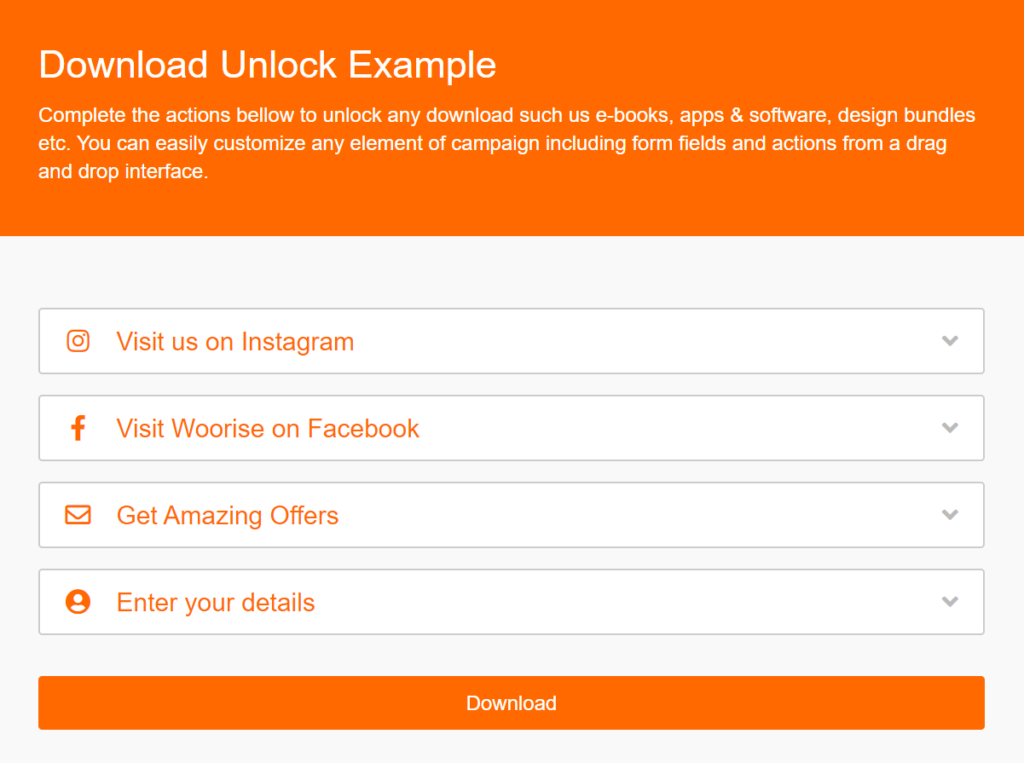
Conversational landing pages
It’s a really smart idea to create separate landing pages for different features, products or services. That way you can capture more leads because you’re targeting different needs and wants.
For example, if a lead who is interested in Feature A but uninterested in Feature B lands on a landing page dedicated entirely to Feature A, you’ve got a great chance of converting them. Yes, it means a little more work on your part – but it’s well worth it when it comes to qualifying leads because you also know exactly what interests them.
You can also create conversational landing pages that are a bit more personal by adding chatbots. A chatbot can talk directly to your customer, resolving any problems they’ve got that otherwise might prevent them from signing up.
Here’s an example of a conversational landing page created with Tidio:
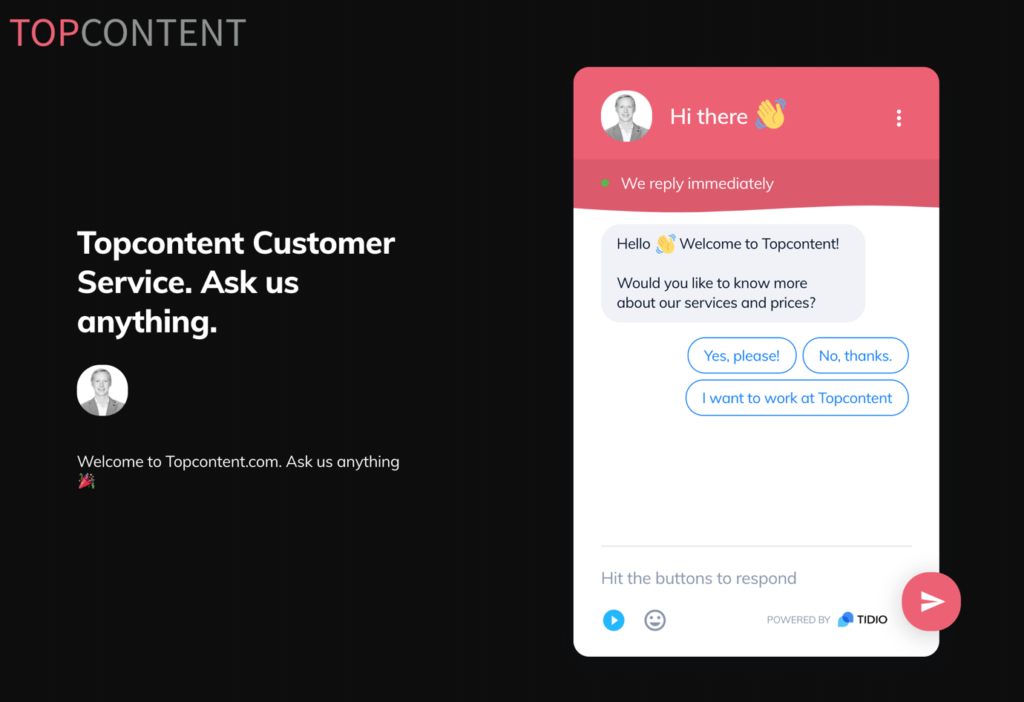
4. Use Social Media Platforms
Good ol’ social media is still one of the best channels you can use to generate more leads for your business. Whether you’re B2B or B2C, it doesn’t matter – your customers are here. You can use social media to promote your gated content (see above) and drive more targeted traffic via ads.
It’s worth mentioning here that social media doesn’t need to cost a fortune; in fact, more than 33% of B2B marketers say that generating leads via social media is a very low-cost option.
You can also team up with influencers on social media and drive traffic from their platforms. For example, you could hold a webinar and invite an expert in your niche to guest talk on it. They will then share the webinar on their platforms, which exposes you to a wider audience.
Social media platforms are also great for running contests and giveaways. As long as you comply with the rules, you can have great results running competitions for your audience. And of course, using Woorise makes it really easy to design and monitor them.
Here’s a great article outlining a few ways you can use giveaways to acquire leads and customers. Take a look how you can increase the reach of your contests and giveaways by giving away extra entries to those who share the information across their social media platforms.
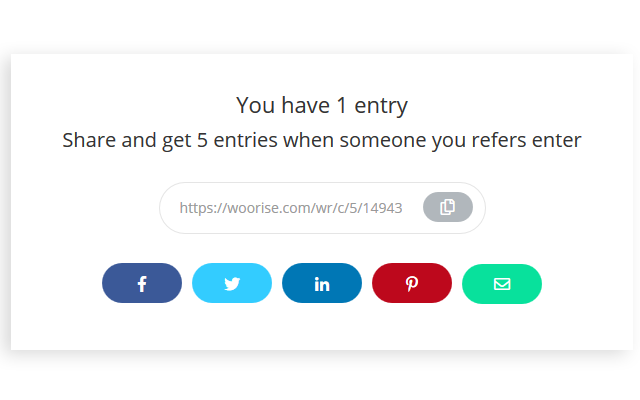
Lastly, it’s important that you only focus on the social channels your customers use. For example, Pinterest will be useful for fashion brands, as will Instagram. B2B businesses, though, would benefit especially from Twitter and LinkedIn, which are the two standout platforms for B2B lead generation.
At the same time, you should still use Instagram to build brand awareness and attract more leads.
5. Invest in Paid-Per-Click Advertising
PPC boosts brand awareness by 80%. It’s great for retargeting people who have visited your website but did not take any action (read: didn’t leave their contact data or buy your product).
It works like this:
Let’s say someone visits your website, has a look around, makes a few clicks but ultimately leaves without converting. Because they’ve spent a bit of time on your page, it’s clear that they’re at least interested in what you’ve got to offer.
As such, you can then use – for example – Google Ads to retarget them with ads that pop up while they’re watching a video on YouTube, or just generally browsing the web. You will then be charged a small fee each time someone clicks your ad.
To make PPC work, you need to add a pixel or tag to your pages that tracks the user. Each individual page can be customised so that you send out tailored ads for maximum conversions. This will also ensure you’re not wasting cash by targeting each visitor with the same ad.
If this sounds like black magic to you, you might want to use the help of some professionals and hire a suitable PPC agency to do the job for you. Nobody likes burning money on poorly targeted ads campaigns if you know someone else can do it better and bring in the results you are expecting.
6. Give Affiliate Marketing a Try
If you’re finding it hard to generate loads of leads yourself, you can get people to help you in the form of affiliates. With affiliate marketing, affiliates capture leads for you by using some of the same tactics as you (as well as some different ones). And if an affiliate manages to convert a lead, you pay them a commission.
It clearly works because over 80% of brands use affiliate marketing to generate leads. Moreover, it’s expected that affiliate marketing is expected to overtake email as one of the kings of lead gen tactics.
To make affiliate marketing work, you need to define your goals, how much you want to pay the affiliates, and you also need to find high quality affiliates who will guarantee you more leads. The last thing you want to do is waste time on affiliates who are targeting the wrong customers with poor quality content.
Conclusion
B2B lead generation is all about forgoing loads of poor quality traffic in favour of high quality traffic that converts. The aim of the game is to capture as many visitors as possible before nurturing them and turning them into customers to grow your B2B business.
Use the tips in this article to get your lead generation campaign up and running. Then, make sure to keep monitoring your results so that you’re able to make the right changes at the right time.


